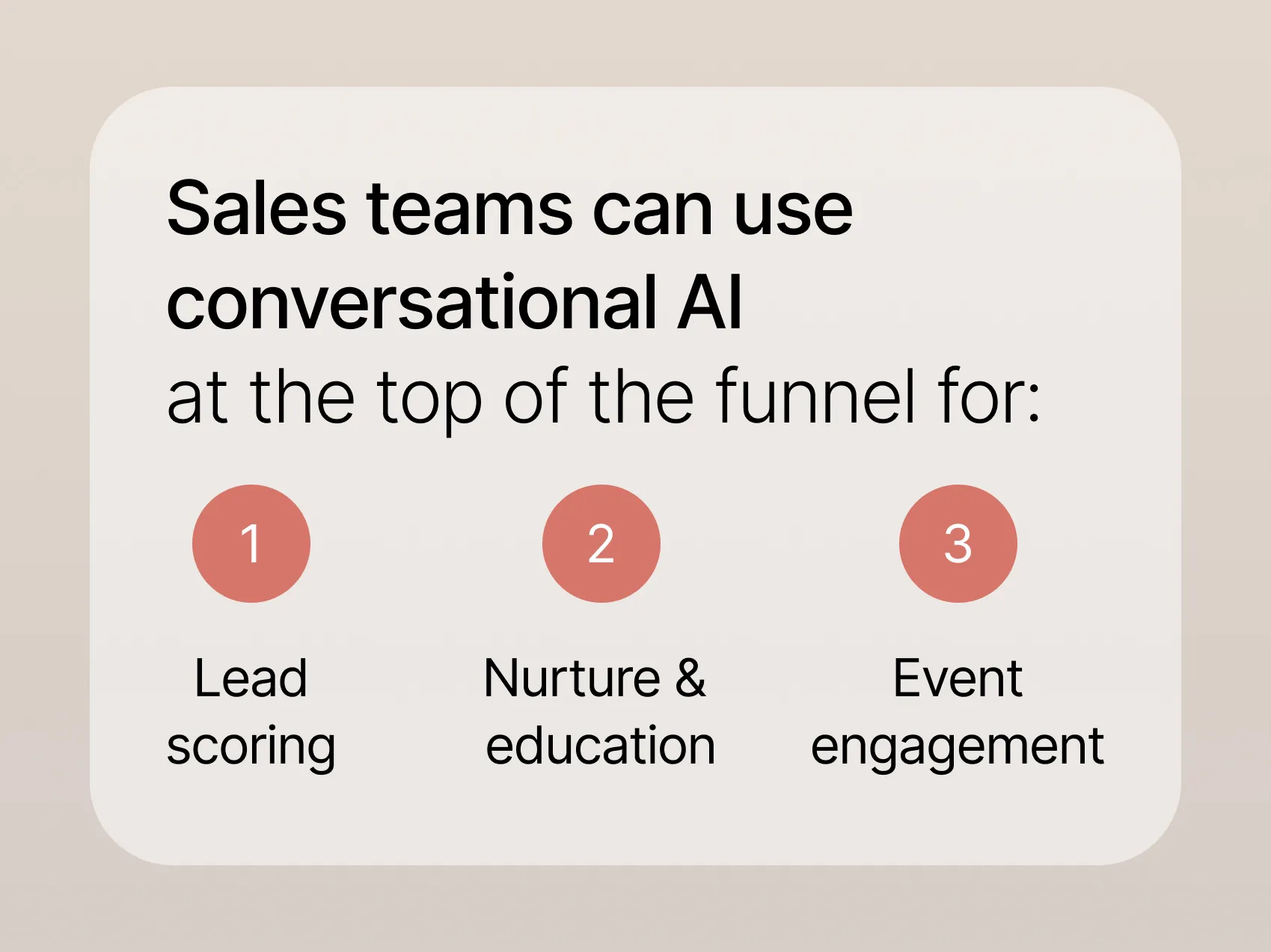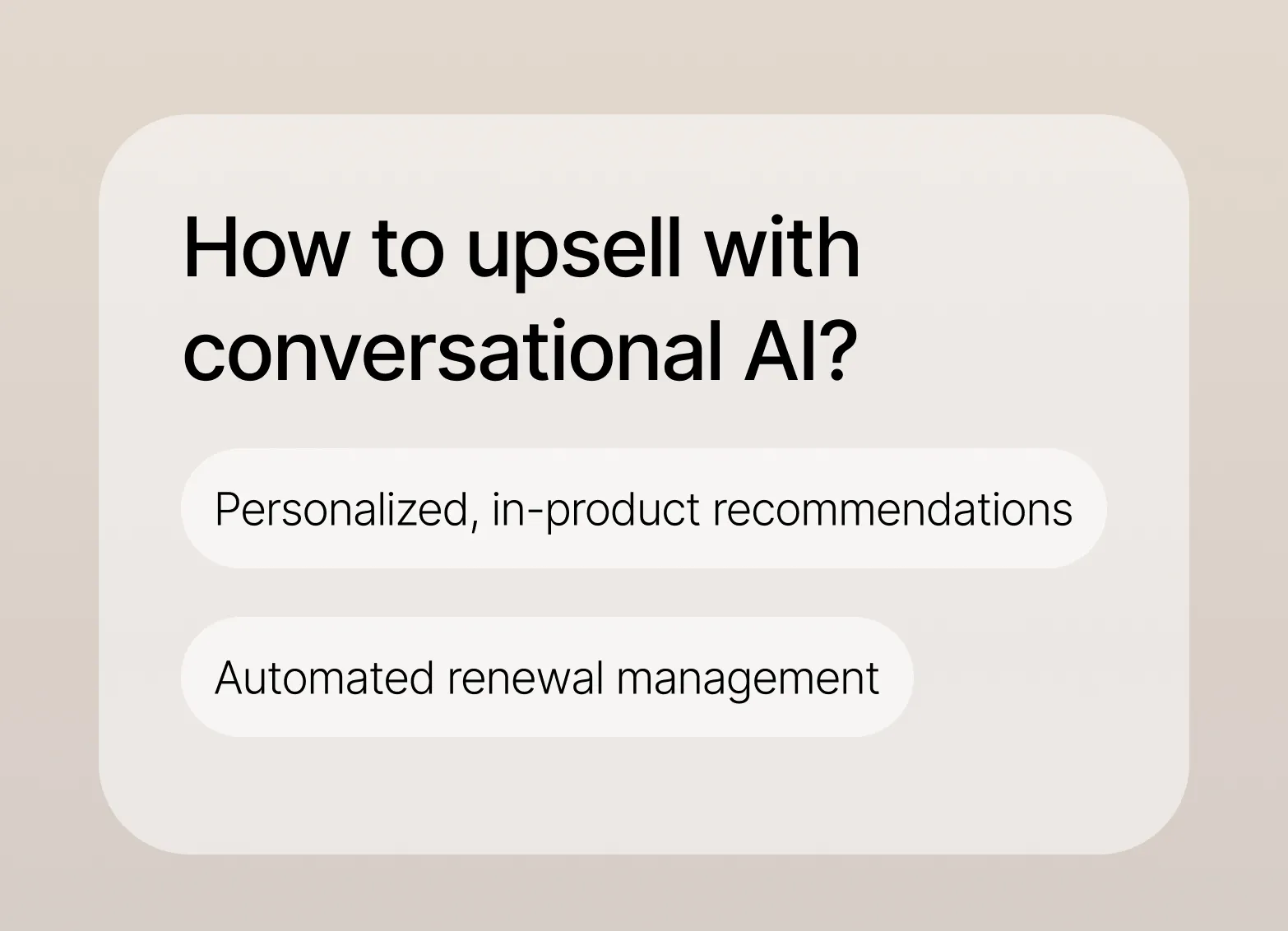The best revenue teams are using conversational AI for sales
With so much of sales resting on human connection, automation can be hard. But conversational AI for sales gives you the best of both worlds

Sales teams are natural go-getters, but sometimes time gets in their way. Many high-performing sales leaders feel like there just aren’t enough hours in the day to do all of the things they need to do.
That’s why the explosion of conversational AI technologies has been especially exciting. This type of AI goes beyond the mere automation that other AI tools deliver. Conversational AI can foster genuine interactions at scale by mimicking human conversations.
Thanks to the sophisticated algorithms that are continuously being improved upon, these tools can understand, process, and respond to human language.
The introduction of Large Language Models (LLM) has made conversational AI tools more intelligent than ever by introducing more contextual awareness. We’ve come a long way from the early chatbots that many people may associate with this idea, so as a sales leader dedicated to not just keeping up with, but staying ahead of the times, you should be taking advantage of it.
Conversational AI for sales teams gives you a competitive edge
Why should sales leaders care about conversational AI? Primarily, it comes down to speed.
I know we’re probably all sick of hearing this over the past couple of years, but it’s true that across industries, almost every team has to do more with less.
And people are struggling to keep up. Only 7% of companies respond in five minutes or less to a prospect who submitted a form. And over 50% don’t get back to people until five business days later.
But just because it’s the norm, it doesn’t mean prospects are willing to be patient. Research finds that the company that responds first gets 35-50% of the sales.
All of this is to say that you need to keep up. So you either need to work around the clock and burn yourself out, or you could take advantage of technology that helps to expand upon your human capabilities.
Personally, I’d go with option #2.
In addition to speed, conversational AI tools for sales can help give you a competitive advantage by making it easier than ever to personalize your reach-out to prospects. It cuts down the time needed to research personalization tactics for prospects, which is often the most time-consuming part so it can be easy for it to fall through the cracks at times.
With conversational AI taking a lot of the grunt work, it’s easier for you to send more engaging messages to every single prospect.
Top-of-funnel use cases
Conversational AI can help you scale your reach-out processes and help you put your pipeline-filling activities at least partially on auto-pilot.

Lead qualification
As you may be aware, 50% of the prospects you speak to are often not a good fit for the product you’re selling. Pre-AI, you’d still have to go through with these conversations just to find out they’re not a good fit, potentially wasting hours on a relationship that ultimately isn’t worth your time.
But AI can act as your personal assistant, pre-screening leads by qualifying or disqualifying them based on initial interactions.
Conversational AI tools can begin the conversation and start to pull in data to automate lead scoring. Whether pulled from existing data or grabbed from just the conversation, the AI tools can take into account attributes like demographics, engagement history, and online behavior to assign them a lead score.
If someone’s score is low, or if they’re disqualified as a lead, they can be dropped from the funnel or pushed to more automated systems, but once a lead is hot, the AI tools can drop them right in your lap.
Since the data being pulled from these conversations is so rich, you can also use predictive analytics to anticipate which leads are going to be the most lucrative. By taking into account pain points, tone, and other factors that were previously difficult for technology to nail down, you can add an extra layer of intelligence to this lead-scoring model.
Nurture and education
Conversational AI can help to warm up your leads from the moment they hit your website. In conversations that feel like they’re talking to a real person, prospects can ask questions that allow your virtual “salespeople” to guide them through product features and benefits to pique their interest.
Personalization is extremely relevant here. This could be on the page level, i.e. the way the conversation starts is determined by the content of the page the visitor is one. Or it could be personalized on an individual level, taking into account their browsing history, demographics, or previous conversations.
It can answer questions in real-time, suggest related products, or explain complex features, all without requiring human intervention at every step.
This helps to cut down on a lot of the initial nurturing that must be done manually by salespeople. As with lead scoring, the conversational AI tool can hand off a prospect to a human at the most opportune time.
Event engagement
More and more people are using conversational AI for sales assistance at events to interact with attendees, collect contact information, and route interested leads to sales teams.
One of the best strategies is to create a landing page with information and a conversational AI agent who can respond to any questions or comments from visitors. This gives them immediate access to your team, without relying on you responding in the moment.
As a salesperson, you really shine in interactive environments. And conversational AI helps you make the most of face time with prospects, whether at a virtual or in-person event, without leaving you glued to your phone or faced with a mountain of messages to respond to when you get back.
Upselling with conversational AI
Up to a third of your revenue comes from upselling, and between 70-95% of your revenue may come from both upsells and renewals. So your job is far from over once the initial contract gets signed.
Conversational AI for sales is especially helpful here to put a lot of the value-boosting tasks on autopilot to make sure your current users not only stick around
but expand their usage of your product.
By engaging with current customers through intelligent, context-aware conversations, businesses can uncover and take advantage of opportunities for upselling that feel natural and timely.

In-product recommendations
One of the most direct ways conversational AI can drive revenue is through in-product recommendations. As customers interact with a product, AI systems analyze their usage patterns to identify unmet needs or potential enhancements that could improve their experience.
For instance, if a user frequently reaches the limits of their current plan on a SaaS platform, the AI can suggest upgrading to a premium plan that offers higher limits and additional features. The conversational AI tool can start the conversation and respond in the moment to any questions or hesitations the user may have.
This capability isn't just about pushing sales; it's about enhancing user satisfaction by making recommendations that genuinely add value. Since these suggestions are based on actual user behavior, they are perceived as helpful and timely rather than intrusive.
Renewal management
Instead of pre-scheduling generic renewal reminder emails or having to take hours individually reaching out to people as the date creeps neared, conversational AI can help you scale this process.
Automated systems can send timely reminders before a subscription expires, reducing the chance of service interruptions. More importantly, these reminders can include personalized offers that encourage users to explore higher-tier services or additional features that align with their usage patterns.
For example, a user of a graphic design tool might receive a renewal reminder that includes an offer for a bundled package with new design templates and advanced editing tools, based on their frequent use of similar features. By linking the renewal process with personalized upselling, businesses not only improve retention rates but also increase the average revenue per user.
Conversational AI for sales isn’t about replacing humans, it’s about scaling their capabilities
Everyone gets scared about AI replacing their jobs, but hopefully, it’s become clear here that conversational AI should help you lean more into the quintessential human tasks involved in the sales process.
When you can automate a lot of the most tedious components of your day-to-day, it empowers you to focus more on building deep relationships and approaching each conversation with prospects with as much knowledge and intentionality as possible.
